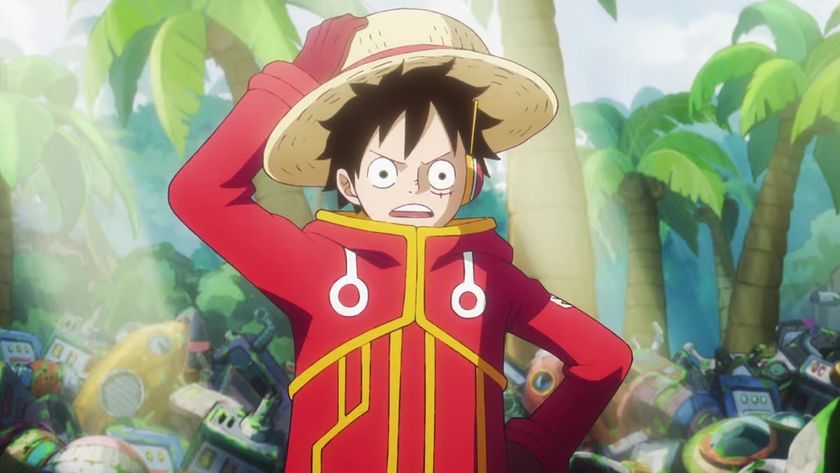50 Greatest Martin Scorsese Moments
Marty magic from cinema's bestfella
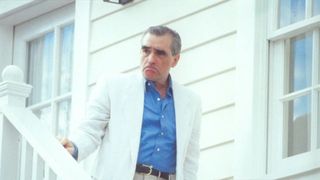
Thin And Angry
The Source: The Muse (1999)
The Moment: Scorsese is no stranger to parodying his motormouth persona, like in his cameo in the Albert Brooks film, where he tells screenwriter Steven Phillips (Brooks) he's working on a remake of Raging Bull with a thin guy - "thin and angry, can you see it?"

Shoot The Dog
The Source: Alice Doesn't Live Here Anymore (1974)
The Moment: Scorsese proved his range early in his career by directing Ellen Burstyn to a Best Actress Oscar as the titular heroine, headed West in search of a new life. Part of the film's recognition stemmed from the naturalistic, improvised ease between Burstyn and screen son Tommy (Alfred Lutter), especially in this charming character beat as chatterbox Tommy attempts to explain the punchline to a joke.

Human Sculpture
The Source: After Hours (1985)
The Moment: In the film's final, manic minutes, yuppie Paul Hackett (Griffin Dunne) is encased in plaster, stolen by burglars and inadvertently deposited outside the office building he's spent the entire film trying to get back to. We're as disorientated as he is.

Rockumentary
The Source: The Last Waltz (1978)
The Moment: Scorsese achieved a new level of fame when he took centre-stage as an interviewer discussing the career of The Band with its members. His intelligent but earnest persona was mercilessly lampooned several years later when Rob Reiner played "Marty Di Bergi" in This Is Spinal Tap .

Celebrity Dating
The Source: The King Of Comedy (1983)
The Moment: Having helped Rupert Pupkin (Robert De Niro) to kidnap chat show host Jerry Langford (Jerry Lewis), crazed fan Masha (Sandra Bernhard) binds her hostage in duct tape and forces him to have dinner with her.

Don't Blink
The Source: Mirror, Mirror from Amazing Stories (1986)
The Moment: Scorsese tackled an episode of the TV series as a favour to exec producer Steven Spielberg, but his tale of a man (Sam Waterston) plagued by a phantom (Tim Robbins) he can only see in reflections is very creepy - nowhere more so than when he looks into his girlfriend's eye and sees himself being strangled by the ghoul.

Casting Gatsby
The Source: Entourage episode Return To Queens Blvd (2008)
The Moment: After disastrous project Smoke Jumpers goes up in flames, down-on-his-luck Hollywood star Vincent Chase (Adrian Grenier) gets the call he's been waiting for his entire life. Scorsese (whose brief, punch-the-air cameo captures his status as the best in the business) wants him for the title role in his modern-day update of Gatsby . [Perhaps he knew his regular go-to guy, DiCaprio, was already lined up to play the same role for Baz Luhrmann?]

Ward C
The Source: Shutter Island (2010)
The Moment: Scorsese's homage to the psychological thrillers of Golden Age Hollywood hits its peak with the jittery visit of Teddy Daniels (Leonardo DiCaprio) to the hostile Ward C of Ashecliffe Hospital, where psychopath Noyce (Jackie Earle Haley) tells Daniels wild conspiracy theories... or are they?
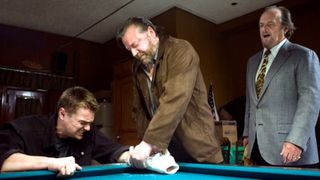
Initiation
The Source: The Departed (2006)
The Moment: Billy Costigan (Leonardo DiCaprio) is trying to persuade Frank Costello (Jack Nicholson) to take him on as a gangster. First, though, he has to be searched by Costello's associate French (Ray Winstone), including breaking the cast that is protecting Billy's broken hand. Ouch.
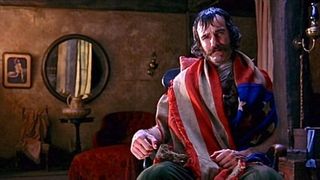
Wrapped In A Flag
The Source: Gangs Of New York (2002)
The Moment: Amsterdam Vallon (Leonardo DiCaprio) has befriended Bill 'The Butcher' Cutting (Daniel Day-Lewis), the man who killed his father. Things get awkward when Bill decides to wax lyrical about Vallon senior, "the only man I killed worth remembering," while draped in the Stars And Stripes. It's an opportunity for Day-Lewis to steal the film wholesale from the young hero.

Tempest In A Teapot
The Source: No Direction Home: Bob Dylan (2005)
The Moment: In tandem with his film career, Scorsese is gradually amassing a definitive record of the baby-boomer rock that inspired him. His four-hour Dylan doc unearths amazing testimony, not least from folk musician Dave Lee Ronk who tells of the "tempest in a teapot" over ownership to the song House Of The Rising Sun , whose arrangement Dylan lifted from Lee Ronk before The Animals did the same to Dylan.
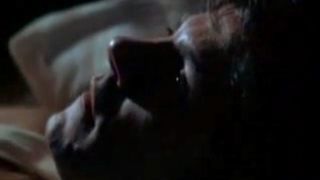
We'll Make 'Em Turn Their Heads
The Source: Mean Streets (1973)
The Moment: While Mean Streets wasn't Scorsese's debut, it feels like it - nowhere more so than in the opening moments, as Charlie's (Harvey Keitel) head hits the pillow in time to the opening drumbeat of The Ronettes' Be My Baby , cueing up the inspired spontaneity of the home-movie style opening credits.

Victory Celebrations
The Source: New York, New York (1977)
The Moment: Riding high on unbridled confidence, Scorsese's big-budget musical opens with one of his biggest crowd scenes: the epic meet-cute between singer Francine Evans (Liza Minnelli) and saxophonist Jimmy Doyle (Robert De Niro) against the backdrop of wild VJ Day celebrations.

The Whole World Has To Answer Right Now
The Source: Bad (1987)
The Moment: Scorsese's love of music made him an obvious choice for promos, but it's surprising how few he has directed. The stand-out is the 18-minute short made to accompany the release of Michael Jackson's hit single and - especially the central dance routine, a gritty update of West Side Story 's style to a modern gang setting.

Sex And Violence
The Source: Cape Fear (1991)
The Moment: Scorsese's remake of the 1962 thriller muddies the water in its fable of good versus evil by ensuring the family under attack from maniac Max Cady (Robert De Niro) isn't exactly whiter than white - nowhere more so than the long, uncomfortable scene when teenage daughter Danielle (Juliette Lewis) proves surprisingly amenable to Cady's advances.

The House Wins
The Source: Casino (1995)
The Moment: Scorsese is in his element documenting life behind the scenes in Vegas, not least in showing what happens to one unlucky cheat who happens to get caught. Ace Rothstein (Robert De Niro) orders that the hustler's favoured right hand is mangled with a hammer, telling him, "Now you're gonna have to learn with your left hand."

Cut Up
The Source: The Big Shave (1967)
The Moment: Scorsese's surreal student short depicts a man having a shave so severe he cuts open his face and neck. Often cited as an allegory about U.S. involvement in Vietnam, it's more useful as an early indication of the young director's capacity for filming violence.

Life Is A Canvas
The Source: Life Lessons from New York Stories (1988)
The Moment: Scorsese's short charts how the stormy art of boozy painter xx (Nick Nolte) results from his troubled relationship with muse (Rosanna Arquette). The moments of Nolte at work, intensely inspecting the canvas before attacking it with his brush, are kinetic depictions of the violent nature of art that has always occupied Scorsese's attention.

Bodies
The Source: Kundun (1997)
The Moment: Scorsese surprised many by tackling the story of the Dalai Lama, but combined his interest in religious figures with his expertise with violent imagery in a dream sequence where the Tibetan leader realises he is standing amongst the corpses of dozens of monks, captured in a bravura crane shot by cinematographer Roger Deakins.

Along Came A Spider
The Source: Goodfellas (1990)
The Moment: Spider (Michael Imperioli) had already tasted Tommy DeVito's rage when the latter shot him in the foot. So telling him, "Why don't you go fuck yourself, Tommy?" takes considerable - but ill-advised - balls. Tommy's retort is simply to blast him to bits.

Meatballs
The Source: Italianamerican (1974)
The Moment: Scorsese's mother Catherine has several memorable cameos in her son's movies, notably Goodfellas , but her finest on-screen role was playing herself, preparing a meatball sauce in Marty's affectionate documentary about his family.

Prohibition Blues
The Source: Boardwalk Empire (2010)
The Moment: In addition to serving as executive producer on the HBO show, Scorsese helmed the pilot episode, ensuring a house style in his image - nowhere more so than in the elaborate montage where Jimmy Darmody (Michael Pitt) and Al Capone (Stephen Graham) prepare a violent ambush while the good folk of Atlantic City are entertained by comedian Eddie Kantor.

Joey Clams
The Source: Mean Streets (1973)
The Moment: Charlie (Harvey Keitel) tries to berate Johnny Boy (Robert De Niro) for not paying off his outstanding debts. The actors' semi-improvised banter, based on Abbott and Costello routines, is a treat, especially when De Niro starts making excuses about having to give the cash to Joey Clams.

Average Nobody
The Source: Goodfellas (1990)
The Moment: Dripping with irony, the ending of Goodfellas sees Mob traitor Henry Hill (Ray Liotta) forced to lie down on the Witness Protection Programme. Breaking the fourth wall, Hill tells us, ""I'm an average nobody. I get to live the rest of my life like a schnook," as Sid Vicious' My Way provides sarcastic musical accompaniment.
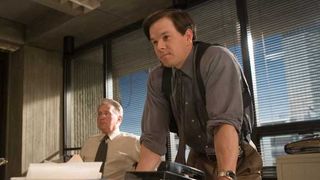
Dignam vs Dignity
The Source: The Departed (2006)
The Moment: New recruit Billy (Leonardo DiCaprio) - head-hunted as an ideal undercover agent - is put through his paces by acid-tongued Sgt Dignam (Mark Wahlberg). "What's the matter, smartass? You don't know any fuckin' Shakespeare?"

The Night They Drove Old Dixie Down
The Source: The Last Waltz (1978)
The Moment: Scintillating cut from Scorsese's film of The Band's farewell concert, highlighting the care the director went to in mapping out camera positions to allow elegant tracking shots and sharp close-ups.

Crash!
The Source: The Aviator (2004)
The Moment: Howard Hughes (Leonardo DiCaprio) takes his prototype spy plane for a test flight, only for the engines to fail mid-flight. The resulting crash into a Beverly Hills home - as panicky and visceral as any in cinema - highlights that just because Scorsese doesn't often attempt spectacle, that doesn't mean he isn't brilliant at it.

History Lesson
The Source: Hugo (2011)
The Moment: Georges Méliès (Ben Kingsley) recounts his filmmaking career, giving Scorsese the opportunity to create one of his loveliest montages, a history lesson in which the state-of-the-art at the beginning of the 21st century (3D, digital) is used to recreate the state-of-the-art at the beginning of the 20th.

All The Animals Come Out At Night
The Source: Taxi Driver (1976)
The Moment: Scorsese conjures a vision of modern-day hell as Travis Bickle (Robert De Niro) intones his dark beliefs - "one day a real rain will come and wash all this scum off the streets" - while Michael Chapman's neon-slick cinematography and Bernard Hermann's sleazy score reinforce the mood.
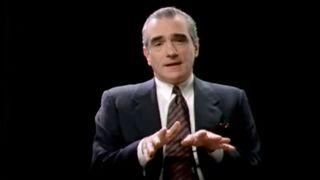
Scorsese The Teacher
The Source: A Personal Journey with Martin Scorsese Through American Movies (1995)
The Moment: Scorsese was commissioned by the BFI to direct and narrate a history of Hollywood to coincide with the centenary of cinema. Typically, Scorsese couldn't stop himself and his passion is undimmed over nearly four hours of rapid-fire hero-worship of his predecessors.

Dead And Buried
The Source: Casino (1995)
The Moment: Joe Pesci doesn't have much luck in Scorsese movies. He's bumped off in Goodfellas after thinking he's going to become a made man. Then, in spiritual sequel Casino , as maverick Mobster Nicky Santoro, he and an associate are beaten senseless with baseball bats and then buried alive in the desert, in one of Scorsese's most gruelling depictions of gangster violence.

Upper Class Gangsters
The Source: The Age Of Innocence (1993)
The Moment: Many were surprised when Scorsese announced plans to adapt Edith Wharton's 19th century tale of upper class manners. But with this early scene at a party - where Scorsese's camera glides through the sets while Joanne Woodward's narrator sardonically explains the rules of society - reveals the film as a companion piece to Goodfellas . Both are about the anthropology of New York subcultures and, in its own way, this one is as cruel as the Mob.

Boxing Outside The Ring
The Source: Raging Bull (1980)
The Moment: Forget the official fights. The most terrifying expression of Jake LaMotta's (Robert De Niro) rage comes when wife Vickie (Cathie Moriarty) sarcastically tells him she fucked his brother Joey (Joe Pesci) and the boxer - blinded by jealousy into believing her - beats Joey to a pulp. Scorsese drops the stylised choreography to present it into raw verite style.

Career Ambitions
The Source: Goodfellas (1990)
The Moment: The opening flash-forward throws us straight into hell as mobsters Jimmy Conway (Robert De Niro), Tommy DeVito (Joe Pesci) and Henry Hill (Ray Liotta) realise that the body in the truck isn't quite dead. As the trio finish off the job, Hill informs us in voiceover that, "As far back as I can remember, I always wanted to be a gangster." Cut to credits - and Scorsese has our attention.
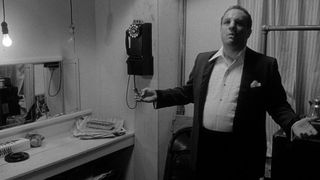
A Contender
The Source: Raging Bull (1980)
The Moment: Scorsese helped to raise the bar for immersive acting by shutting down principal photography to allow Robert De Niro to put on 70 lbs of weight through binge eating in order to portray the older, fatter Jake LaMotta. The results are transformative - and De Niro won the Oscar - but the film's final scene shows it's not just about the surface. As LaMotta rehearses the "I could've been a contender" monologue from On The Waterfront , the film captures the fall of a hugely talented man who let it all go to waste.

A Normal Life
The Source: The Last Temptation Of Christ (1988)
The Moment: Scorsese revolutionises the Passion as Jesus Christ (Willem Dafoe) imagines escaping from the Cross, starting a family and getting old. This remains the filmmaker's single most controversial scene - a French cinema was firebombed in protest - but exemplifies Scorsese's tough but thoughtful approach to his Catholicism. If anything, it ennobles Christ even more by showing what he sacrificed.

Basement Legend
The Source: The King Of Comedy (1983)
The Moment: How creepy is wannabe stand-up comedian Rupert Pupkin (Robert De Niro)? Well, he's turned his bedroom into a fake chat show, where he can pretend to be the king of comedy alongside cardboard cut-outs of host Jerry Langford (Jerry Lewis) and fellow 'guest' Liza Minnelli.

Pool Hall Fight
The Source: Mean Streets (1973)
The Moment: A simple business deal with pool hall owner Joey goes awry when De Niro's Johnny Boy takes exception to being called a mook. What the fuck's a mook? Nobody knows, but the insult is enough to spark a freewheeling fight, with Scorsese's camera dancing nimbly between tables as The Marvelettes' Please Mr Postman plays on the jukebox.

Never Got Me Down
The Source: Raging Bull (1980)
The Moment: Hard to pick only one of the film's many superbly staged boxing matches but Jake LaMotta's (Robert De Niro) defeat to Sugar Ray Robinson edges the rest, by virtue of its vital character work. The self-hating LaMotta allows Robinson to beat the crap out of him (Scorsese capturing the blood spurting off his face in agonising slo-mo) but is still cocky enough to tell his opponent afterwards, "You never got me down, Ray."
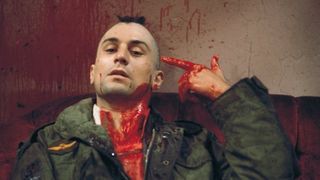
(Desaturated) Bloodbath
The Source: Taxi Driver (1976)
The Moment: The climactic orgy of destruction as Travis Bickle (Robert De Niro) blasts his way through pimp Sport (Harvey Keitel) and cronies to rescue underage prostitute Iris (Jodie Foster). Infamously, the MPAA demanded that Scorsese desaturated the colours to avoid the violence looking too bloody, but if anything the stylised palette makes the scene look creepier.

Dominoes Fall
The Source: Goodfellas (1990)
The Moment: The bungled aftermath of the Lufthansa raid causes the paranoid Jimmy Conway (Robert De Niro) to order the execution of his fellow conspirators. Cue a series of stylised tableaux as bodies are discovered all over the East Coast, with the gliding camerawork timed to hit the beats of the piano coda to Derek And The Dominoes' Layla .
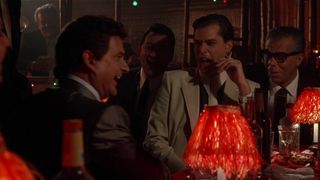
Funny How?
The Source: Goodfellas (1990)
The Moment: Scorsese's willingness to let a moment play out has never been bettered by Joe Pesci's Tommy playfully busting Henry Hill's balls after the latter calls him a funny guy. Tommy's mock indignation is hilarious but also uncomfortably edgy, and Ray Liotta's spooked reaction sets up Tommy's short fuse nicely for later bouts of violence.

Backseat Driver
The Source: Taxi Driver (1976)
The Moment: Scorsese's greatest on-screen role came as the disturbed - and disturbing - passenger who explains to Travis Bickle how he intends to murder his wife and her lover, teaching De Niro a lesson in pure psychosis. Eagle-eyed viewers may have clocked that Scorsese appears briefly earlier in the film, hinting he might be the Devil leading Travis to damnation.

Five Points
The Source: Gangs Of New York (2002)
The Moment: Scorsese begins his biggest film to date with his biggest action sequence to date - the battle of the Five Points. For all the blood and thunder of the scrap, the shot that tingles spines is before the fight commences, as Monk (Brendan Gleeson) boots open the door to reveal the battlefield beyond.

At The Copacabana
The Source: Goodfellas (1990)
The Moment: So why would a nice girl like Karen Hill (Lorraine Bracco) go out with a wiseguy like Henry Hill (Ray Liotta)? Scorsese shows us why she's so seduced, by seducing us - with an exquisite one-take Steadicam shot in which the couple avoid queuing for the Copacabana nightclub by taking a short-cut through the kitchen, all the way to a stage-side table.

Cavalleria Rusticana
The Source: Raging Bull (1980)
The Moment: The opening credit sequence is simplicity itself - just Jake LaMotta (Robert De Niro) shadow-boxing in the ring - but becomes something noble and transcendent thanks to the evocative monochrome cinematography and the haunting choice of music, the Intermezzo from Pietro Mascagni's Cavalleria Rusticana .
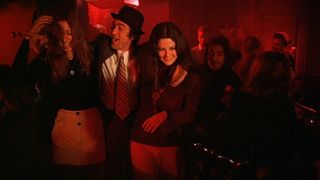
Jumpin' Johnny Boy Flash
The Source: Mean Streets (1973)
The Moment: Robert De Niro swaggers into cinematic immortality as Johnny Boy arrives at Tony's bar, a girl on each arm, the actor's strut married to gliding dollywork and Jumpin' Jack Flash on the soundtrack. For De Niro and the Stones alike, it wouldn't be their last time in a Scorsese film.

Finally
The Source: The 79th Academy Awards (2007)
The Moment: At the eighth attempt - and 26 years after his first nomination - Martin Scorsese finally bagged an Oscar for directing The Departed . The Academy, realising how belated the prize was, brought out the big guns to present the statuette: Francis Ford Coppola, Steven Spielberg and George Lucas.

Echo Chamber
The Source: Taxi Driver (1976)
The Moment: The most famous scene in the Scorsese / De Niro repertoire sees loose cannon cabbie Travis Bickle practice his pre-kill routine into the mirror. Imitated a million times, it's worth remembering that De Niro's exaggerated ire - "Well I'm the only one here. Who the fuck do you think you're talking to?" - provides a rare laugh during a particularly oppressive stretch of the movie.

May 11, 1980
The Source: Goodfellas (1990)
The Moment: Henry Hill's life comes crashing down in Scorsese's greatest moment - a sustained blast of manic energy that symbolises Hill's cocaine-ravaged paranoia and propelled by whipsmart editing (notably the frantic montage of Hill hitting the brakes when he nearly hits a car) and sublime music cues from Harry Nilsson to The Rolling Stones.









